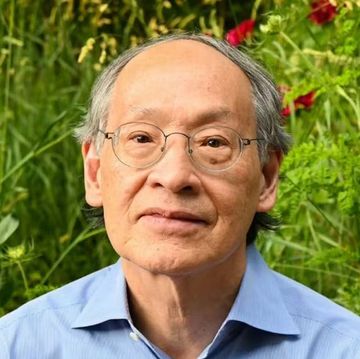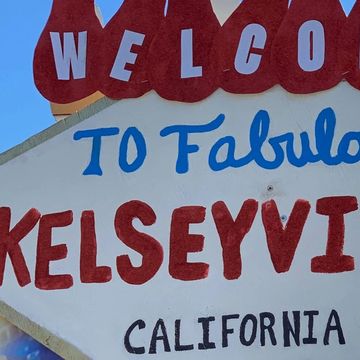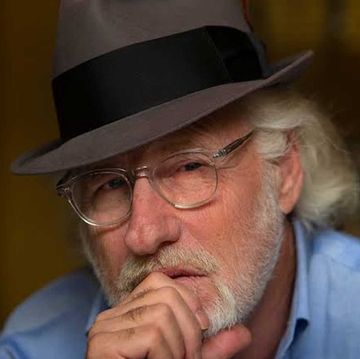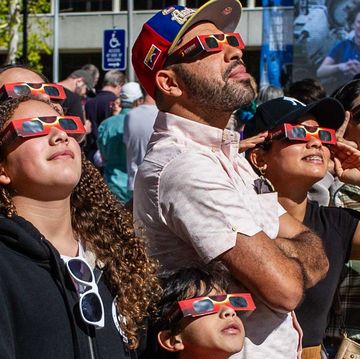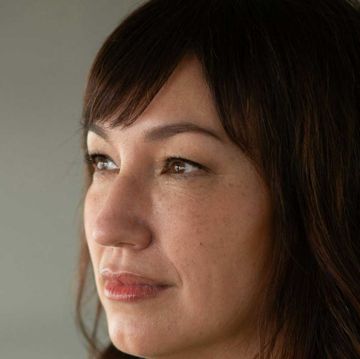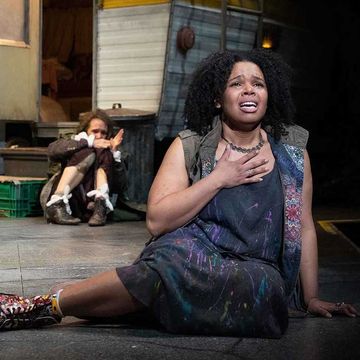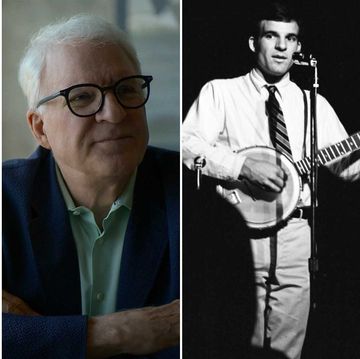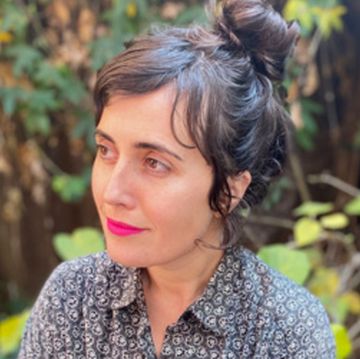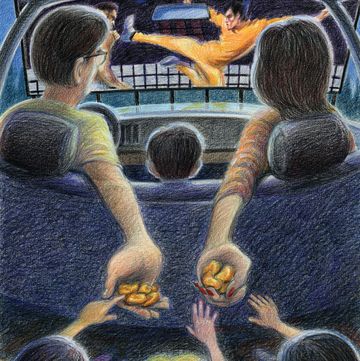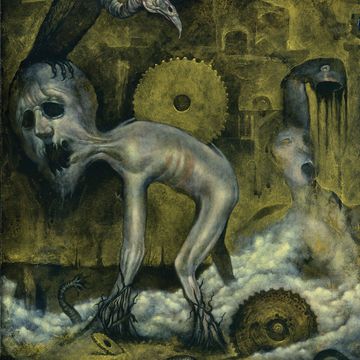Alta Journal is pleased to present the fourth installment of a five-part original series by author and Alta contributor Gary Kamiya. Each week, we’ll publish online the next portion of “Urban Camping.” Visit altaonline.com/serials to keep reading, and sign up here for email notifications when each new installment is available.
This Alta Serial is a camping story with a wild twist: It takes place in San Francisco. Kamiya has set out to have a four-night, five-day adventure without sleeping in a hotel or at a campground. Day four starts with Kamiya wiping sand off his sleeping bag and looking forward to the manicured beauty of Golden Gate Park.
Thursday, June 1, Ocean Beach. It’s 5:30 a.m. I give up trying to sleep and get out of my sleeping bag. I survey my surroundings. Two middle-aged Asian people are running down the beach, and two wet-suited surfers are heading into the water. Otherwise, there’s nobody around. There’s virtually no traffic on the Great Highway, but I still feel pretty exposed out here. I pack up my stuff as fast as I can, managing to wipe most of the sand off my sleeping pad. I mount up, descend the dunes via a little sandy chute, and start walking along the beach in the direction of the former Cliff House.
I’m headed for a Sunset district standby, Java Beach Café. I vaguely recall reading somewhere that it was a key part of the Sunset renaissance that revitalized the formerly moribund district and made it cool. It’s a local hangout, frequented by surfers, bicyclists, joggers, and the whole unclassifiably democratic crowd that is drawn to Ocean Beach. It opens at 6 a.m. And it has coffee.
It’s only 10 blocks away, but they’re long blocks. As always in the Sunset, I’m struck by the fact that this is a completely different city, with its own sublimity and its own tedium. It has always felt somehow unfair that the westernmost side of San Francisco, with all the majesty and drama of the Pacific Ocean literally crashing up against it, seems to be an afterthought in this town. But at the same time, it makes sense. This is a world unto itself.
I visit the big public restroom on the west side of La Playa Street. As I’m washing up, an agonizing groan emanates from one of the toilet stalls, followed by an even more horrible groan. It sounds like someone is being tortured in there. A few minutes later, the poor guy starts mumbling something. I can’t make out what it is, but it’s an upgrade over his victim-of-Torquemada sounds. He’s still issuing his incomprehensible monologue when I leave.
Java Beach has only a couple of customers at 6:30 a.m. I order a latte and charge my phone. It’s another gray day, but there are signs of light in the east. I’m a little tired and a little bored. For the first time on this trek, I didn’t get enough sleep. But it’s cheering to know today is my easiest day. My destination tonight, the fourth and last night, is almost embarrassingly close: I only have to walk to Sutro Heights Park, half an hour away. My plan is to amble through Golden Gate Park and back.
I while away a couple of hours at Java Beach reading Patrick Leigh Fermor’s A Time of Gifts, in which the author recounts how as an 18-year-old he walked from the Hook of Holland to Hungary. He writes like an angel, speaks the language of every country he goes through, is befriended by counts and philosophers, recites Latin verse in the original to himself, and walks across half of Europe. I’m a monolingual hack who knows bartenders and is walking around San Francisco in a circle. Hey, I’m trying.
Before entering Golden Gate Park, I buy a yogurt at a convenience store, which I eat on some steps near the Murphy Windmill. I make for North Lake, part of the Chain of Lakes and one of the most beautiful places in the park. On the north end, just a few steps away from the houses on Fulton Street, a great blue heron is waiting in the water for something to impale.
I feel for the first time like I’m on a backpacking trip. That familiar sense of combined weariness, wonder, boredom. You’re not taking in any normal stimulation, but you’re taking in huge amounts of abnormal. You’re torn between wanting it to end right now and wanting it to go on forever.
I stride past the Bison Paddock, thinking of all the times I have walked here with my daughter. The sun has come out as I pass two of the great meadows in the heart of the park, Lindley and Hellman Hollow. After my cool, gray day and night at the beach, the park feels playful and glorious. I’ve never felt its park-ness, its artificiality, so strongly. Walking across the city for all these hours and hours is a slow-acting drug that has opened my mind and focused my perceptions. It feels like I’ve been practicing on some mental guitar and my chops are up.
I eat a surprisingly decent ham sandwich with brie at the Stow Lake Boathouse, go east along the lake, walk down the little hill that is always infested with a weirdly creepy colony of squirrels, and enter the Japanese Tea Garden. As I move through this perfect little world, the thought comes to me that San Francisco, like every city, like every place in the world, is its own perfect—yes, perfect—self-contained universe. Not all of it is as obviously luminous as the landscaped masterpiece I’m standing in. My city has its share of poverty and despair and darkness. But seen in the right way, it is a work of art, a Japanese print titled City with Clouds. The poet Czeslaw Milosz spoke of “compos[ing] from fragments a world perfect at last.” Perhaps the lesson we’re all trying to learn is to see the world this way. It’s a lesson that never ends.
The backpack I’ve been pointlessly hauling through the park turns out to be useful after all. I meander through the Botanical Garden and make for the Conservatory of Flowers, planning to commandeer one of the yellow Adirondack chairs scattered around there and take a nap. I find one and sit down. But I realize I need proper horizontality, so I get out my sleeping bag, lie down on it, and float pleasantly off into a dreamy daze.
On my way back to Ocean Beach, it’s remarkable how much smaller the park feels than it usually does. Walking from one end to the other and back would normally be a little daunting. Today, it’s just a Thursday stroll.
At the Beach Chalet restaurant, I pause to look at Lucien Labaudt’s wonderful WPA-era murals. I linger on the one that shows people sunbathing, swimming, playing music, and having a picnic at Baker Beach. The artist has captured something that runs like a hidden thread through the city’s history, something rarely memorialized but essential: fun. I imagine myself in the background of the painting, a tiny figure with a backpack walking down the beach, just another San Franciscan having a good time, part of the endless tapestry of this city.
I eat an early dinner here, drink a couple of good IPAS, and walk toward Sutro Heights Park. I think I might get hungry and want to have a nightcap later, and I know I’m not going to want to walk for half an hour to the nearest bar, at 37th and Balboa, so I buy a sandwich and a half-pint of Jim Beam at a Safeway. As I walk through its parking lot and past some unlovely apartment buildings, I rue the loss of funky, dilapidated, wondrous Playland-at-the-Beach, the amusement park that screamed and rattled here for almost 50 years.
At Balboa Street, an obscure and fantastic sandy stairway ascends through ice plant to Sutro Heights Park. This path is so unmaintained and has such sublime views that it feels like a cross between Bolinas in West Marin and Ocean Beach in San Diego. Surfers carry their boards up and down it. There’s a run-down apartment building off to the east with a long, motel-like balcony. It’s the most beach-towny spot in San Francisco. It makes you want to sit in the sand on a sunny afternoon and drink a Budweiser forever.
I climb to the crenellated parapet at the top of the park, which Adolph Sutro created in 1885. It’s a stunning place, overlooking the Pacific and Ocean Beach. One of my best friends was married here. I can look all the way down Ocean Beach and see where I slept last night.
Sutro was San Francisco’s Santa Claus, handing out toys from a bottomless sack. He built the vast baths below here and a nearby amusement park, which stood on the most cheerfully named street in town: Merrie Way. He erected a mansion on these grounds and spent a fortune surrounding its more than 20 acres with elaborate Italianate gardens. In classic 19th-century fashion, he gilded the lily, installing more than 200 imported concrete replicas of Greek and Roman statues around the site. It was a kitschy middlebrow wonderland. I hope Sutro would approve of this grown-up kid sleeping in his enchanted gardens.
On a scouting expedition, I had explored the thickets in the dunes below here, a couple of hundred yards away. I found three or four perfectly concealed places to sleep, but when I came back, each one was marked by garbage or blankets. As usual, it was hard to tell if the sites were currently occupied or abandoned, and I wasn’t willing to find out. It was disconcerting to think that a little colony of people was living out here.
I had planned to sleep on the parapet lawn, hidden from sight as much as possible, next to a wall. But the park is so spectacular, and so close to a residential neighborhood, that it’s a popular hangout spot at sunset. People keep showing up, and they don’t leave. An icy wind is blowing. Around 10 p.m., the parapet is finally deserted. I roam the entire park, checking all of it out. I spot one guy and wonder if he suspects what I’m up to. A few minutes later, he leaves.
On the beach below, people have lit several festive bonfires. At the closest one, a brilliant burst of red and green fireworks shoots into the air and cascades down.
I go back up to the parapet. It’s still pretty windy, and I’m not convinced I won’t be discovered up here, so I walk down to the north side of the parapet. I get lucky. Right under the wall, there’s a dirt path half concealed by flowers and plants. It’s divided into four eight-foot-long sections, each just wide enough for a sleeping pad. The path peters out after the last one, so no one is going to be approaching me from that direction. The one before it is perfect. I lay out my ground cloth, inflate my pad, and get into my bag. Some plant next to me has a delicious minty fragrance. There’s no wind. I’m in a flat, snug bower atop a cliff above the ocean. It’s illicit-sleeping heaven.
I am just starting to drop off when I hear the sound of teenage girls laughing and talking. The noise is coming from directly above me, about 10 feet away. I look up, but I can’t see them, and they can’t see me. They giggle away up there, and I can’t fall asleep. I’m an inferior version of brave Ulysses, whose naked ears were tortured by the sirens’ sweet singing. Finally, the 16-year-old sirens leave and not very brave Ulysses falls asleep.
But then I wake up and look at my phone. It’s 1:48 a.m. I lie there, my mind playing a broken record in which I am exhausted and sick on what was supposed to be my triumphant last day. After about an hour, I manage to fall asleep again.•
DAY 5: THE LAST LEG »
Visit altaonline.com/serials to keep reading “Urban Camping,” and sign up here for email notifications when each new installment is available.
Gary Kamiya is a cofounder of Salon, a former executive editor of San Francisco magazine, and a columnist for the San Francisco Chronicle. He was born in Oakland, grew up in Berkeley, and has lived in San Francisco since 1971. His first book, Shadow Knights: The Secret War Against Hitler, was a critically acclaimed narrative history of Britain’s top-secret Special Operations Executive. Kamiya’s second book, Cool Gray City of Love: 49 Views of San Francisco, was awarded the 2013 Northern California Book Award for Creative Nonfiction and has sold more than 50,000 copies. His local history column, Portals of the Past, runs every other Saturday in the San Francisco Chronicle, and Kamiya’s work has appeared in the New York Times Book Review, ArtForum, Sports Illustrated, Mother Jones, and many other publications and has been widely anthologized, including in The Best African American Essays 2010, A New Literary History of America from Harvard University Press, and The Longman Reader. Kamiya is the recipient of numerous awards, including the Ron Ross Founder’s Award by the San Francisco History Association and the Redmond Kernan History Award from the Presidio Historical Association. He lives on Telegraph Hill.










